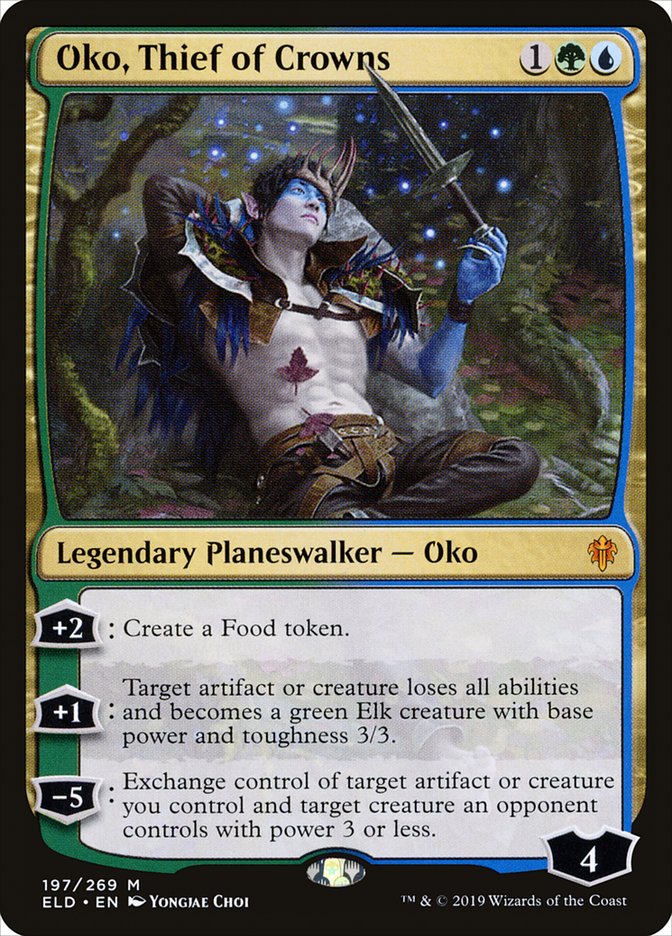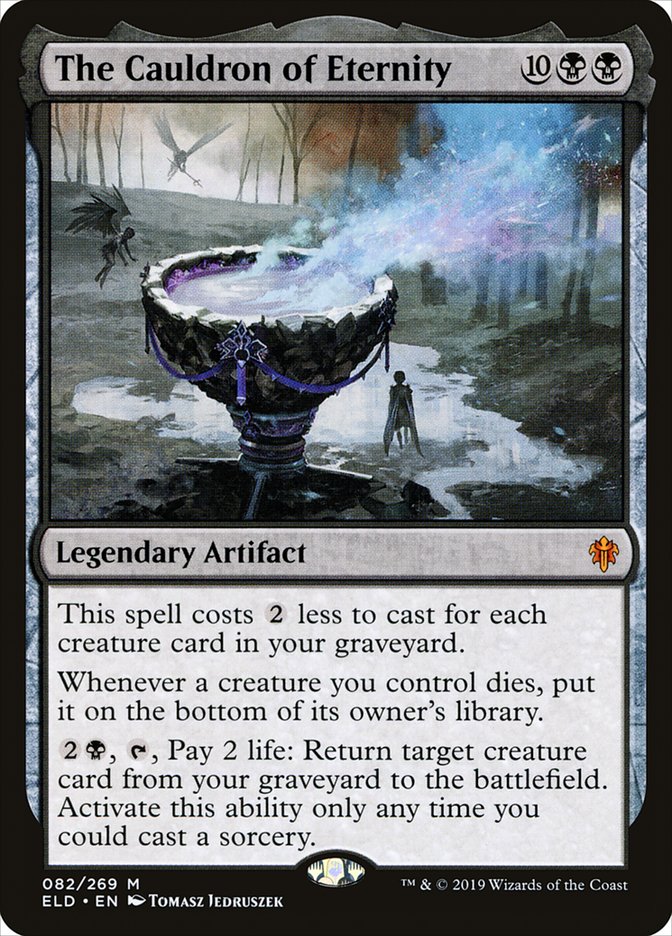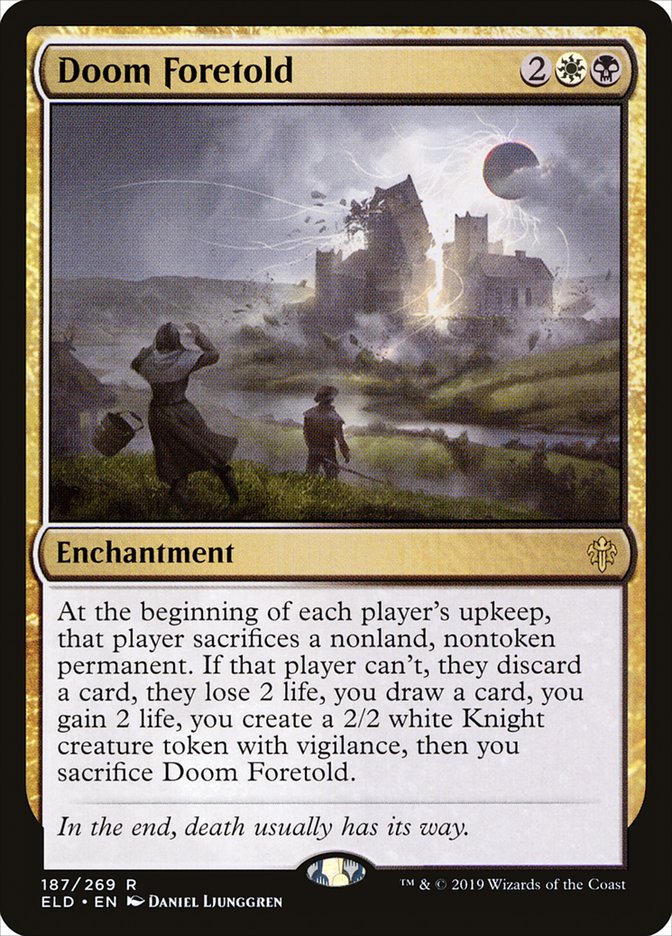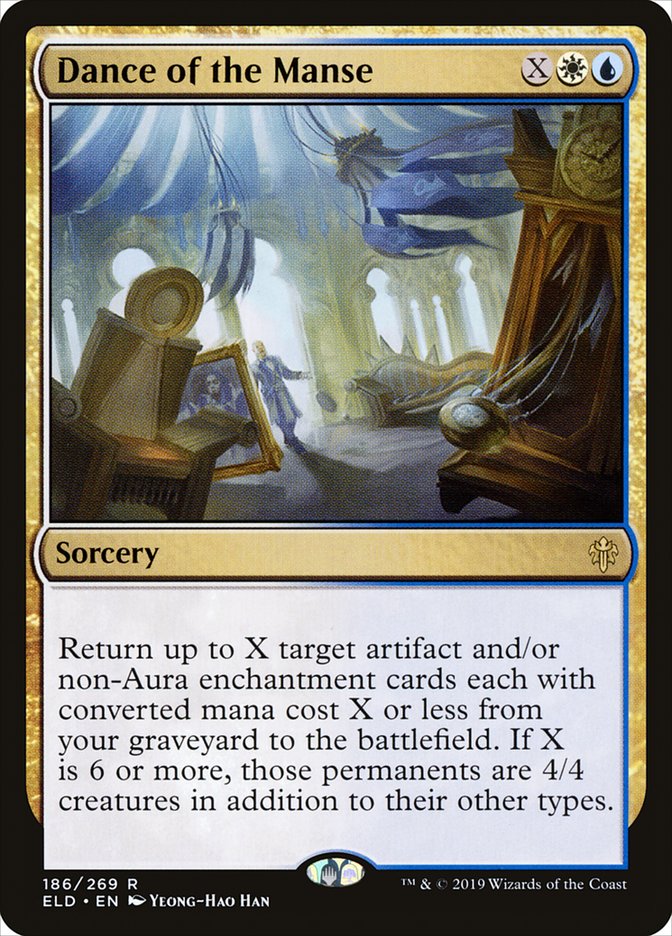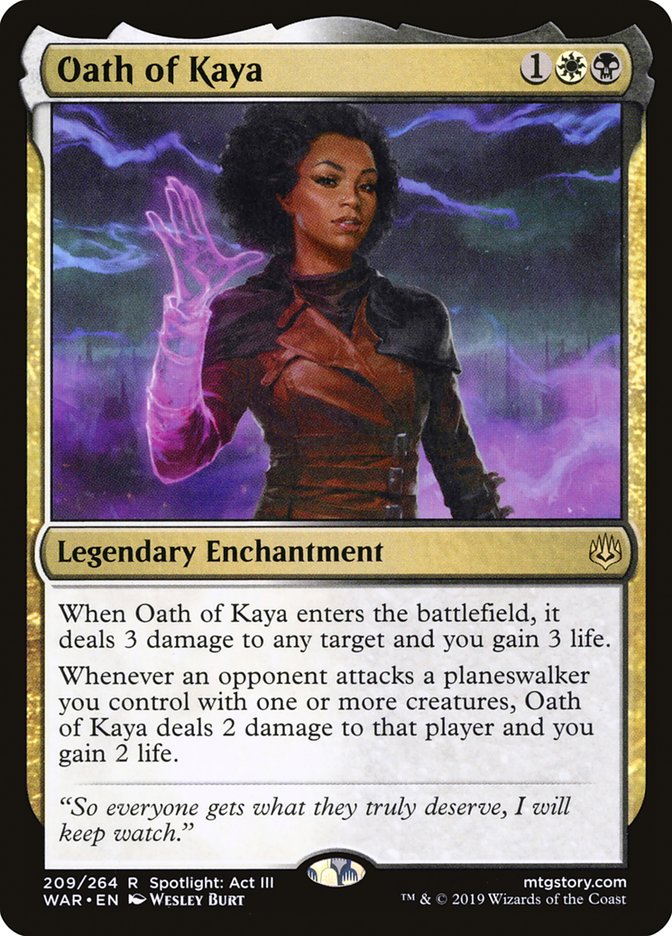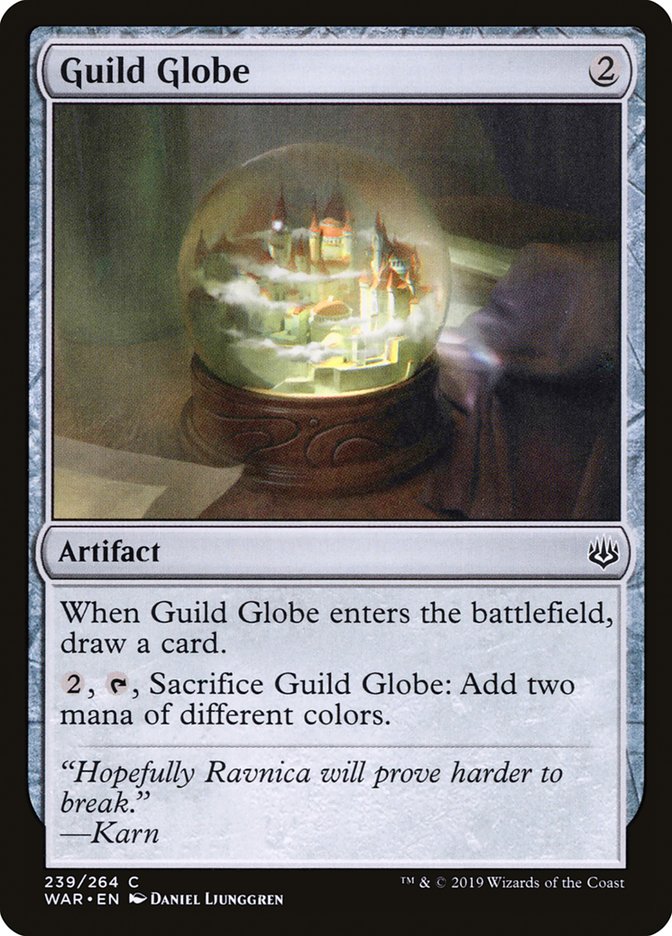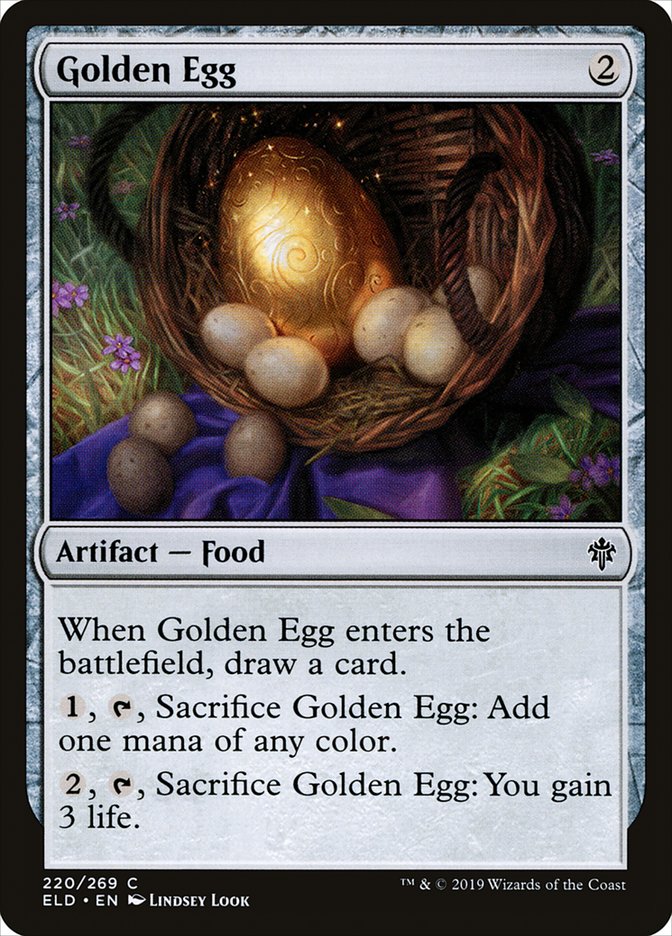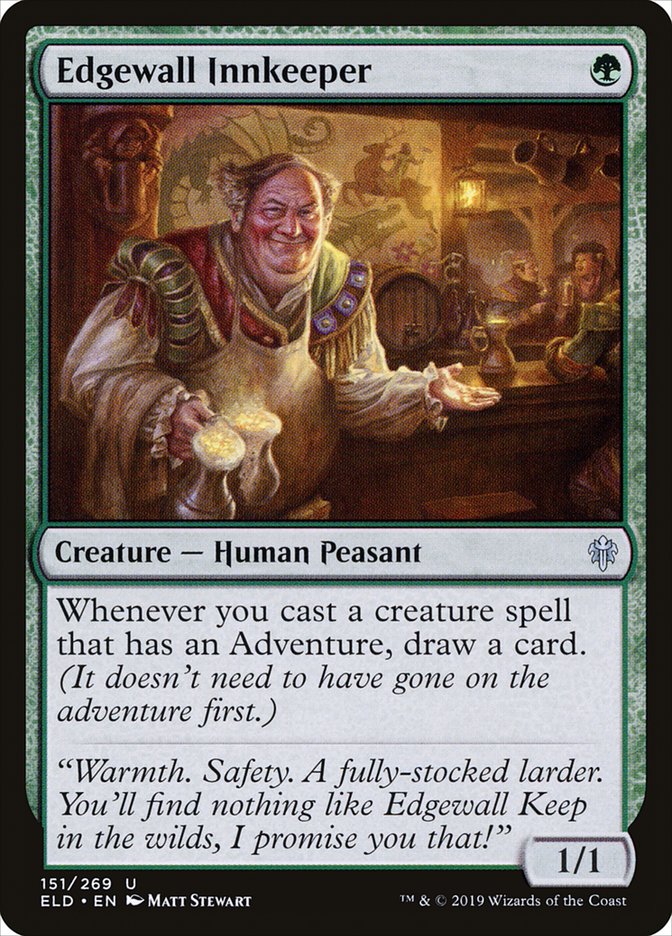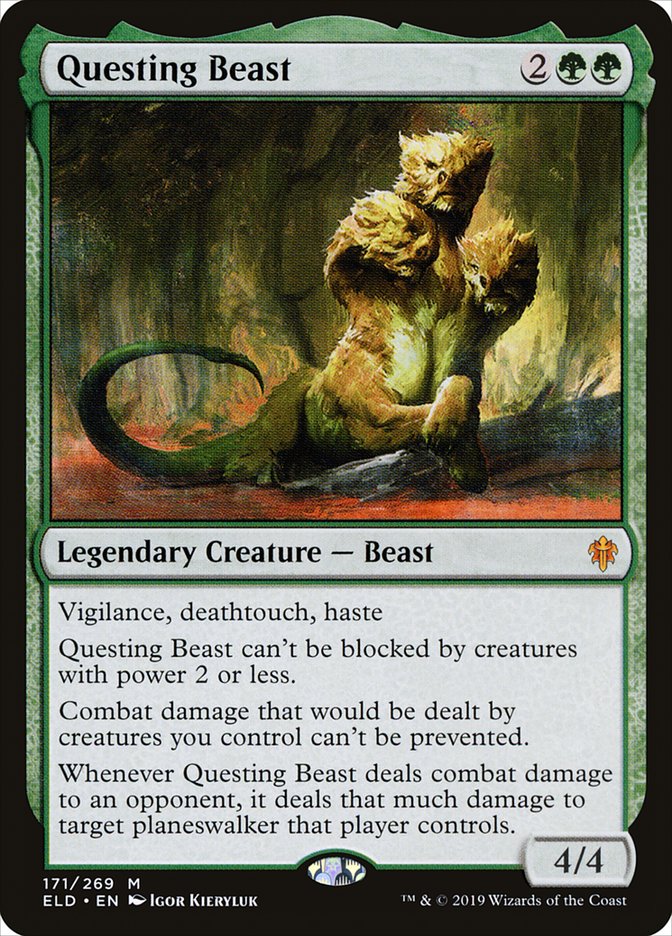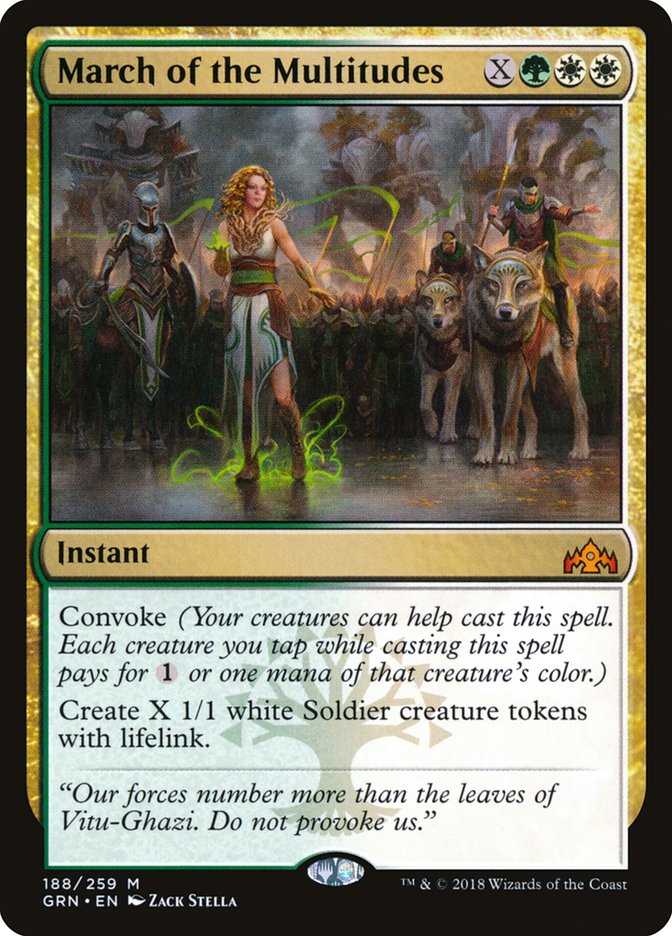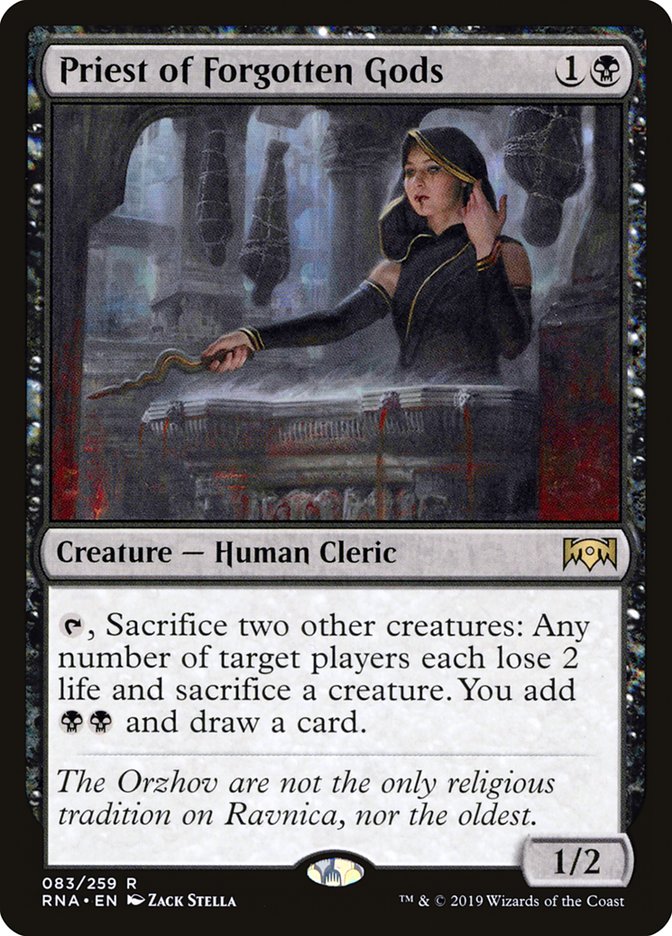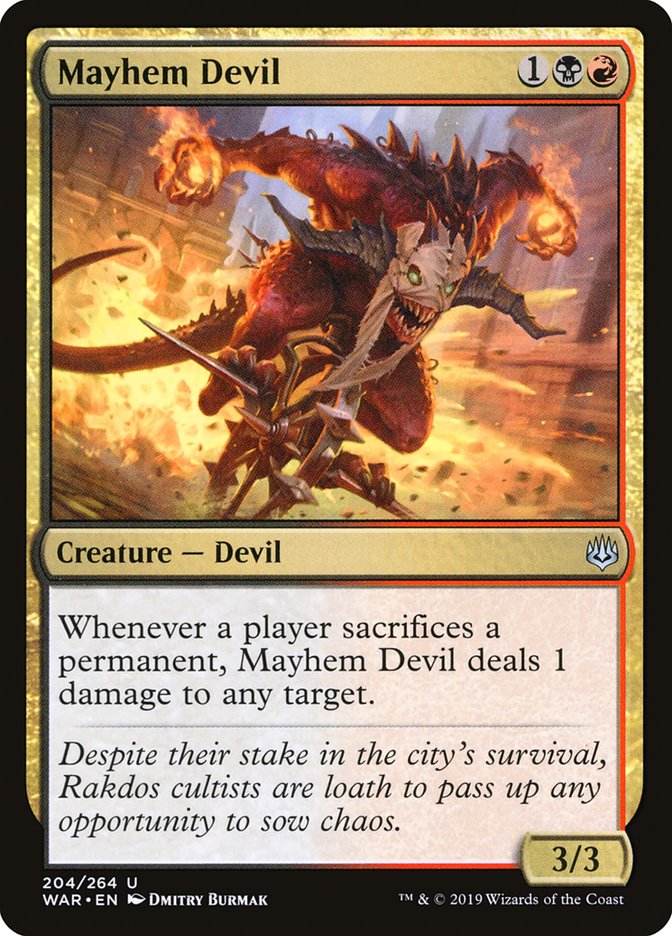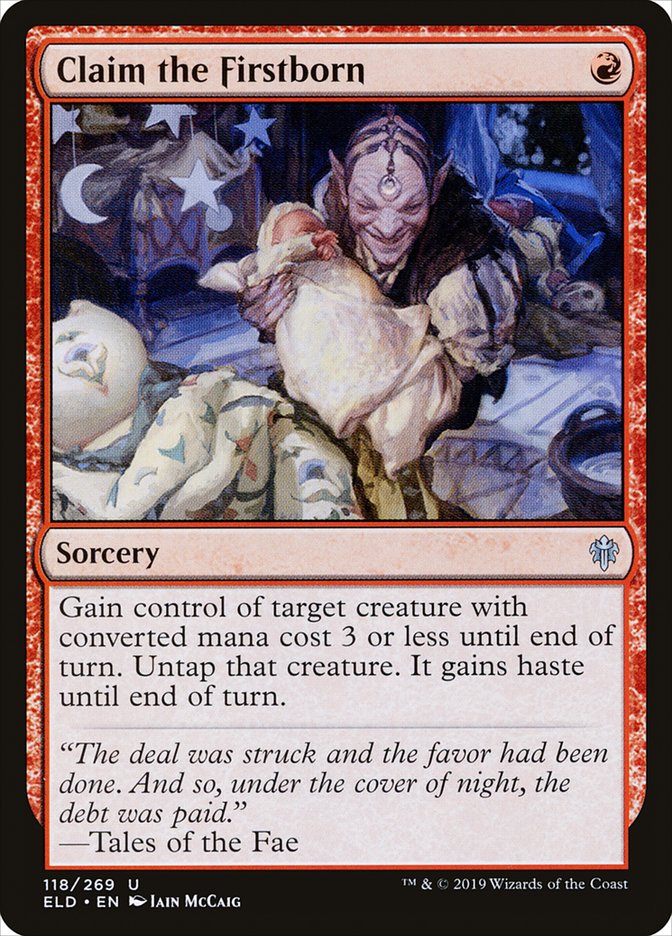Before the most recent Banned and Restricted announcement, Throne of Eldraine Standard was basically split between two types of Tier 1 strategies – Golos decks and Food decks. With the banning of Field of the Dead, different Oko, Thief of Crowns builds have solidified themselves as the default “deck to beat.” Today I’ll be talking about three strategies that I believe are favored against the average Food deck.
First, I think it’s important we talk about what you should not do if you’re trying to beat Food decks. I believe that, for starters, you should not play a red deck – namely Gruul Aggro but also Mono-Red Cavalcade and Mardu Knights. As a general rule, the combination of Oko, Thief of Crowns both gaining life and neutralizing big threats and Wicked Wolf being an indestructible Flametongue Kavu means it’s hard to push through with these decks. I know that Javier Dominguez just won Mythic Championship V with Gruul Aggro, but there are four important things to consider when you evaluate results from Mythic Championship V:
1) The sample size was very small. There were a lot of Golos and Food decks but not many representatives of any other deck, so it’s hard to draw meaningful conclusions. Mono-Red Cavalcade, for example, is a deck that’s relatively popular on the Arena ladder but that only had one representative in the entire tournament.
2) Decks were extremely tuned to beat Bant Golos and right now they won’t be. Anything people do to their decks to beat Bant Golos likely makes them worse versus you (such as cutting down on removal) and just reversing these changes will make them better versus Mono-Red Cavalcade or Gruul Aggro. The Czech version of Bant Ramp, for example, had zero copies of Wicked Wolf in the maindeck; in a metagame without Golos decks, they would very likely have played it.
3) The structure for the tournament is not like we’re used to, since there was a cut on Day 1 and then a hard reset. For example, Javier Dominguez Top 8’ed the tournament with an 8-6 total record and then went on to win it. Chris Kvartek, on the other hand, had a strictly superior 8-4 record and finished outside the Top 16!
4) The tournament unfortunately had a series of crashes and matches that had to be restarted. At first, I assumed this would even out among the competitors – after all, a crash can be negative or positive for you – but Lucas Esper Berthoud brought up that it affected the slower decks more negatively and I think he’s right. Even if you assume the chance of a crash increases linearly with time (and it could be exponential for all we know), longer games are more likely to clash, and the Golos decks are more likely to be winning in the long games. As a hypothetical, imagine that there’s a 10% chance the game will crash at the twenty-minute mark; if I’m a Mardu Knights player, this can almost never hurt me, because the games I win will always take less than twenty minutes, and if it crashes at that point, I’m probably getting a restart in a game where I wasn’t favored.
I believe the combination of these factors means we should be very careful when taking the results of this tournament at face value and when using it to predict how future matchups will go.
You should also not play a strategy that is reliant on getting a big artifact or creature on the battlefield. Cards like The Great Henge and The Cauldron of Eternity are more trouble than they’re worth when they become a 3/3 the moment you cast them due to Oko, Thief of Crowns’s second ability. Similarly, it’s probably not in your best interest to have a deck whose goal is to cheat Drakuseth, Maw of Flames onto the battlefield or to accelerate a Sephara, Sky’s Blade.
Basically, when you build your deck, you need to think about the very real scenario that any artifact or creature you play could end up as a 3/3 Elk, and if that’s not acceptable, then that card should probably not be played. If you’re trying to base your deck on one single card, you’ll have a much better chance if that card is an enchantment (like Fires of Invention) because those can’t be answered by Oko.
Now that we’ve got that out of the way, what are the strategies that you should play to beat Food decks?
Control Decks With Answers to Planeswalkers
Playing control against Simic Food can be tricky because of the multitude of powerful planeswalkers, but there’s one specific control build that’s quite good versus them and that’s Esper Dance.
Creatures (1)
Planeswalkers (4)
Lands (25)
Spells (30)

Esper Dance originally appealed to me because it had a very good Food matchup, but the popularity of Field of the Dead decks made it a very unattractive choice for two big reasons. First, it had a remarkably poor matchup against Field of the Dead itself, as the only permanent types that Doom Foretold doesn’t deal with are lands and tokens, and the Golos decks are all about getting lands onto the battlefield to generate tokens, so you matched up very badly versus them. Second, you were hit by a lot of the splash hate for Bant Golos. For example, at Mythic Championship V, several Food decks played maindeck Disdainful Stroke in an attempt to beat Bant Golos, but they would have been just as good against Esper Dance decks.
With Field of the Dead banned, both of these problems go away; your worst matchup no longer exists and people will not be accidentally tuning their decks to beat you because of the popularity of a different deck. This means Doom Foretold goes from a fringe strategy to a legitimately powerful deck, and it’s the deck I’m excited the most about in the new Standard.
The reason this deck is good against Food builds is that the card Doom Foretold is very efficient versus planeswalkers, which are the main way the Simic and Bant builds beat sweepers. Kaya’s Wrath by itself is not going to be enough to beat Food, since both Oko, Thief of Crowns and Nissa, Who Shakes the World survive it, but if you have one or more copies of Doom Foretold on the battlefield, you also get rid of the planeswalkers and at that point it’s almost impossible to lose. Even if you don’t manage to draw the Kaya’s Wrath plus Doom Foretold combination (which you should, since the deck cantrips a lot), you can still just cast Planar Cleansing and get rid of everything in a different way.
Here’s my current Esper Dance list:
Creatures (2)
Planeswalkers (4)
Lands (25)
Spells (29)
- 1 Planar Cleansing
- 4 Thought Erasure
- 4 Kaya's Wrath
- 4 Oath of Kaya
- 4 Guild Globe
- 4 Golden Egg
- 4 Doom Foretold
- 1 Wishclaw Talisman
- 3 Dance of the Manse
Sideboard

This is a very synergistic deck that you probably need to play with or against to appreciate, but the gist of it is that you have a lot of fuel for your Doom Foretold (Oath of Kaya, Guild Globe, Golden Egg), which means you can keep it going forever and your opponent very likely won’t be able to, as Doom Foretold ignores tokens and they are usually the permanents mass-produced by other people. Once you reach six mana, you can cast Dance of the Manse returning Doom Foretold and three other artifacts or enchantments, and then it becomes very hard to lose. Winning the game is usually accomplished by either a swarm of 4/4 attackers with a huge Dance of the Manse or simply repeated chunks of damage with Oath of Kaya and Doom Foretold. Unfortunately the core of the deck is very important, so there’s not much room to customize the list other than tweaking the numbers on cards like Thought Erasure and Murderous Rider.
One card I’ve seen people play a lot in this deck is Emry, Lurker of the Loch. I understand why you’d want to play it (milling is useful because of Dance of the Manse and you get to draw cards off your Golden Eggs and Guild Globe) but I think the card is just not good here. “2, tap, draw a card” is not that good of an ability and it loses a lot of value by being your only removal target. I don’t know when this trend started and if it’ll already be gone by the time you read this article, but I’d strongly recommend against including any copies of Emry in your deck.
A Swarm Deck With a Way to Push Through
Due to Oko’s +1 ability, Food decks are proficient at dealing with one big threat. What they’re not well-equipped to deal with is a swarm of small threats, as long as they do something that’s not just running into 3/3 Elks and Wicked Wolves all day. As an example, here’s Christian Hauck’s Selesnya Adventures deck from Mythic Championship V:
Creatures (29)
- 4 Venerated Loxodon
- 2 Flaxen Intruder
- 4 Lovestruck Beast
- 4 Faerie Guidemother
- 4 Questing Beast
- 4 Giant Killer
- 4 Edgewall Innkeeper
- 3 Shepherd of the Flock
Planeswalkers (1)
Lands (21)
Spells (9)

This deck is also very straightforward. It’s an aggressive white deck that happens to have a draw engine. It’s the most explosive and one-dimensional of the Adventures lists, and I believe its weakness to sweepers in general has mostly kept it at bay relative to the Golgari version, but now that the premier sweeper deck is banned from the format, it might be Selesnya’s time to shine.
This deck is capable of very fast starts that can overpower Food decks as they are developing their mana and casting their planeswalkers. It’s also largely immune to Oko, Thief of Crowns, since it’s a “quantity over quality” type of deck that at the same time is aggressive enough to punish them if they turn your one-drops into 3/3 creatures. The main difference between the Mono-Red decks and a deck like Selesnya Adventures is that the Selesnya deck can’t just be brick-walled by generic bodies, which Simic Food is proficient at creating in the middle and late stages of the game.
It’s true that Simic Food isn’t completely without removal options, and Edgewall Innkeeper will invariably die to one of the fight creatures (Wicked Wolf and Voracious Hydra), but this deck is fast enough that it can get a reasonable amount of value from it before that happens, which isn’t always the case in the Golgari versions, which play more like a Gruul deck than like an aggressive white deck.
It’s also worth noting that this deck doesn’t have any removal in it other than Giant Killer, and it’s therefore vulnerable to Deputy of Detention. However, I expect the stock of Deputy of Detention to diminish in the upcoming weeks. First, one of the biggest drawings from it was the fact that it got rid of all the Zombies from Field of the Dead, and that’s now irrelevant. Second, without Bant Golos as such a huge part of the field, you might end up paying a higher cost for having Hallowed Fountain and Temple Garden in your deck. Third, now that the biggest “noncreature” deck is gone, other Simic decks should play big numbers of Wicked Wolf and Voracious Hydra themselves, so Deputy will be easier to kill in the mirror.
Christian Hauck’s deck is teched out to beat Bant Golos, and for that it runs four copies of Questing Beast, which isn’t that effective versus Simic (since it’s not hard for them to just use Oko on it or double-block it). Now that we don’t have to care about Bant Golos anymore, I would probably remove the Questing Beasts (or at least trim them down to two copies). I think March of the Multitudes is quite good in this deck so I would just make this swap back to the version Reid Duke originally played in the MPL.
A Very Synergistic Deck
Selesnya Adventures has some utility synergy-based creatures (namely Edgewall Inkeeper), but it’s still an aggressive deck at its core. There are, however, some decks that exploit Simic Food’s lack of efficient removal even more. Rakdos Sacrifice is one such deck. Much like Selesnya Adventures, it’s largely immune to Oko, Thief of Crowns because most of its creatures are cheap and turning them into 3/3s would be an upgrade. It feels weird to say “this deck’s cards are all worse than vanilla 3/3s” as if that’s a good thing, but here we are.
I saw on Twitter a while ago that Emma Handy was playing a Rakdos Sacrifice list that was strong against green decks and it seems like a good starting point for this new format. Eric Froehlich also mentioned he submitted something very close to this as his MPL deck for this split, though that list isn’t public yet. Here’s Emma’s list:
Creatures (28)
- 4 Gutterbones
- 4 Priest of Forgotten Gods
- 4 Lazotep Reaver
- 4 Mayhem Devil
- 4 Knight of the Ebon Legion
- 4 Rankle, Master of Pranks
- 4 Cauldron Familiar
Lands (22)
Spells (10)
Sideboard

This deck relies on creatures such as Priest of Forgotten Gods and Mayhem Devil to dominate the battlefield through their incredible synergy with the rest of the cards, and the reason it gets away with that is because there’s little removal in the Food decks. It’s not as explosive of a deck as the Selesnya Adventures builds, but it’s still capable of having explosive draws that pressure planeswalkers and punish your opponent for using Oko on your creatures. I think this point in particular is key; if all you have is a utility creature, they can just turn it into a 3/3 Elk and get away scot-free, whereas if you have aggressive components in your deck, then you can punish them for giving you a Wild Nacatl.
The red splash here isn’t free, nor is it trivial to achieve (there are only nine sources and I would probably like at least one more), but the red cards are worth it. Claim the Firstborn is perfect in this deck as an answer to both small creatures and Hydroid Krasis, and Mayhem Devil machine-guns your opponent’s whole battlefield with Cauldron Familiar and Witch’s Oven. Both red cards play an important role in the deck, as they deal with all the small creatures so that the sacrifice effects of Priest of the Forgotten Gods and Rankle, Master of Pranks can kill the big ones.
Overall, I think Oko decks are very strong, but I believe the answers for them exist in Throne of Eldraine Standard, as long as we don’t also have to worry about Field of the Dead. It’s possible the card ends up getting banned anyway in the future, but for now it’s our job to find ways to beat Oko, and the tools are there if we know how to use them.


